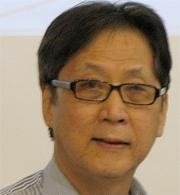在政府面对著税收不足、政府债务不断增加以及官联公司无法刺激经济活力下,年轻的马来西亚人越来越无法找到体面的工作,并对马来西亚的未来失去希望
依据时任人力资源部长的西华古玛表示,在186万移居海外的马来西亚人中,约有113万人居住在新加坡。2022年一项对移居新加坡和汶莱两国的马来西亚人之研究发现,在新加坡工作的马来西亚人中,有39%是技术工人,35%是半技术工人;在汶莱,68%是技术工人,24.1%是半技术工人。
最近官方公布的我国人才流失率为5.5%,比全球3.3%的人才流失率更糟。但这数据可能不仅被低估,甚至也可能掩盖了这样一个事实:这些外流大马人中,包括了最聪明的人才和企业家。
如何阻止人才外流,并为经济提供可持续的增长,即使这不是国家面临的最大挑战,也是最大的问题之一。柔州森林城市和柔新经济特区能否模仿深圳模式,即从早年寂寂无名的珠江三角洲变成全球经济发展的引擎?
位于柔佛州依斯干达公主城的森林城市最初规划为综合住宅开发区。计划于2006年动工,被誉为“一带一路”倡议计划之一。
其开发商碧桂园太平景私人有限公司,是中国碧桂园集团与马来西亚政府支持的公司Esplanade Danga 88私人有限公司(EDSB) 的合资企业。碧桂园是香港交易所主板上市公司,名列《财富》世界500强,是中国三大发展商之一。
森林城市的宏伟愿景是,为中国富裕阶层打造一个豪华的城镇。据设想,计划将吸引中国富人和投资到来,并会在柔佛海峡的四个人造岛屿上建造一个新的现代化城市。
然而,该项目在2018年遭到时任首相马哈迪的打击,他宣布政府不会发出居留证给购买森林城市房屋单位外国人。此外,中国国家主席习近平在2019年实施的货币管制也极大地限制了潜在客户,而新冠疫情的冲击,对该项目更造成了沉重打击。
如今,森林城市已成为一座鬼城,对柔佛州和国家经济来说更是失去了一个机会。森林城市原有潜能作为一座承接新加坡发展外溢的城市,就如深圳与香港关系般,但这目标仍未实现。
如何重振森林城市,以实现其对国家经济的承诺?
森林城市的振兴方案需要多项新元素重新配置。未来的挑战可以从下面的SWOT分析中看出:
优势
●位置:森林城市主要优势在于其接近新加坡的战略地位。位于马新第二通道附近,其可以成为未来发展计划中,连接新加坡和马来西亚的门户。
●其位于目前世界第七大经济集团──东盟的中心位置。东盟拥有仅次于中国和印度的世界第三大年轻人口群:约占总人口的61%是在35岁以下。本区域的中产阶级规模不断壮大,消费能力预计也会快速成长。
●基础设施完善:大部分基础设施和建筑都在森林城市内。这些建设已花了大约200亿令吉。因此,所需的有形基础设施已经到位。
●马来西亚政府的支持:森林城市计划是得到马来西亚政府的全力支持。
●柔佛苏丹的支持:柔佛苏丹曾多次表明支持森林城市计划。
弱点
●声誉受损:森林城市目前被认为是失败的。据报道,森林城市的入住率仅有1%。
●新山和新加坡海关和移民检查站的严重堵塞,严重的影响了高效商务旅行和正常通勤。
机会
●如果森林城市能够从最初的住宅房地产定位转向高科技和制造业增值中心,那么森林城市将迎来重大机会。
●如果能做到这一点,就可以吸引辅助服务业务,从而确保永续成长。当发展达到临界点时(深圳发展的孵化期长达15年以上),将会产生相当大的乘数效应。
●如果吉隆坡至新加坡的高铁建成,将为森林城市未来的发展增添动力。
威胁
●来自邻国的激烈竞争:就吸引外国直接投资而言,马来西亚在东盟排名第四。许多跨国公司的总部都设在新加坡、香港和其他被视为具有优越投资潜力的新兴亚洲城市和国家。
●与槟城的竞争:2023年,槟城在吸引投资表现上,在马来西亚排名第一,尤其是在电子电气领域。柔佛州可以为本地和外国公司提供的比较优势并不明显。
●潜在的体制威胁可能来自于未来政府不再支持这座城市。这种情况以前发生过一次,前首相取消了森林城市中国房地产买家的长期居留签证,并改变了马来西亚第二家园计划申请者的标准。
●新加坡和中国两国的经济状况和资本流出管制的变化,这两个国家的参与对于森林城市现在和未来的发展至关重要。
●政治不稳定加剧官僚主义拖沓和腐败
新使命
森林城市原有的使命必须被新使命取代。新使命应包括将该地区建设成为国家主要创新增长区域之一。这应该包括了微型、小型和中型企业(MSME)和大型国际公司。
这需要双重策略。第一,就是直接以“高压”手段将该地段出售给外国和本地企业,突显了搬迁到森林城市的优势。
第二个策略则困难得多。关键是发展和培育本土创新企业,进而带动起区域内以出口导向为主的中小微型企业一起壮大。
因此,中小微型企业需要新的教育、培育与指导。我们坚信这样的前提:创业精神只能透过经验来学习和维持。一旦认识到这一点,教育体系就必须相应地重新调整。
我们的建议是,森林城市将可成为一个大型创业孵化器,并配备导师来培育创新的中小微型企业。
如此一来,森林城市将可华丽转身。
关键是培育出繁荣的社区经济,并将其流向服务、娱乐、旅游、金融和建筑等行业。
如果森林城市能够创造出本身的“冠军”,这将吸引并激励其他人取得成功。如此,森林城市不再是富裕中国人“飞地”,而是成为真正的马来西亚创业和创新城市,很可能成为与槟城并肩的国家经济救生艇。
当务之急建议:如果可以制定快速二维码或支援RFID的旅行通行证,以方便每日乘坐汽车、通过铁路或水上德士出入境者,这将可让森林城市和柔佛州从新加坡和其外籍专才流动中受惠。
林德宜《森林城市:鬼城或下一个深圳?》原文:Forest City: Ghost City or Potential Shenzhen?
As the nation battles insufficient tax revenue, growing government debt and GLC inability to provide the catalyst of dynamism to the economy, young Malaysians are increasingly unable to find rewarding employment and losing hope for their future in Malaysia.
According to Human Resources Minister V. Sivakumar, some 1.13 million out of 1.86 million Malaysians who have migrated overseas resided in Singapore. Two Malaysian diaspora studies conducted in 2022 found that 39 percent of the diaspora working in Singapore are skilled workers and 35 percent are semi-skilled workers, while in Brunei, 68 percent of the working diaspora are skilled workers and 24.1 percent are semi-skilled workers.
Our national brain-drain rate of 5.5 percent of the population officially revealed recently compares badly with the 3.3 percent for the world. It may not only be an underestimate. It may also conceal the fact that a disproportionate number consists of some of our brightest talents and entrepreneurs.
How to stem the outmigration and provide a sustainable stimulus to the economy is amongst the biggest, if not the biggest challenge for the nation. Can Forest City and the South Johore SSEZ emulate the Shenzhen model which propelled the earlier sleepy Pearl River delta region into a powerhouse of global economic development?
Background
Forest City in Iskandar Puteri Johor was initially planned as an integrated residential development. Commenced in 2006, this was touted as an adjunct to the Belt and Road Initiative (BRI).
Its developer, Country Garden Pacificview Sdn Bhd, is a joint venture between Country Garden Group and the Esplanade Danga 88 Sdn Bhd (EDSB), a Malaysian government-backed company. Country Garden, a company on the Hong Kong Stock Exchange’s Main Board, is listed among the Fortune Global 500 and is one of the top 3 developers in China.
The grand vision of the project was to create a luxury township enclave for well-to-do citizens from the People’s Republic of China. It was envisioned that the township would attract Chinese wealth and investment and build a new modern city, built on four man-made islands on the Straits of Johor.
However, the project was hit in 2018 by then prime minister Mahathir Mohamed, who declared foreigners will not be granted visas to live in Forest City. Further, currency controls introduced by President Xi Jinping in 2019 drastically restricted potential customers and the onslaught of the Covid-19 pandemic dealt a body blow to the project.
Today, the Forest City project is a ghost town and a lost opportunity for the Johor and national economy. Forest City’s potential as a city to take the overflow from Singapore, in a similar manner Shenzhen did for Hong Kong, remains unfulfilled.
What will it take to revitalise Forest City so that it can live up to its promise in the national economy?
A reconfiguration of Forest City requires various new parameters to revitalize the project. The challenges ahead can be seen in the SWOT analysis below:
Strengths
●Location: The primary strength of Forest City is its strategic position in relation to Singapore. Located near Johor’s second link into Singapore, it can be the gateway connecting Singapore and Malaysia in future growth plans.
●It is also located in the heart of ASEAN, currently the world’s seventh largest economic bloc. ASEAN has the world’s third-largest young population after China and India: approximately 61% of its total population is under 35 years old. The region also boasts a growing middle class, with a consumption power projected to grow rapidly.
●Completed Infrastructure: Much of the infrastructure and buildings are onsite in Forest City. Approximately RM 20 billion has already been spent. Consequently, the needed physical infrastructure development is in place.
●Support from the Malaysian Government: This project is fully backed by the Malaysian government.
●Support from the Sultan of Johor: The Sultan of Johor has on many occasions voiced support for the Forest City project.
Weaknesses
●Reputational Damage. Forest City is presently viewed as a failure. According to reports, Forest City is only one percent occupied.
●Severe blockages at the customs and immigration checkpoints across both Johor Baru and Singapore has led to a non-starter for efficient business trips and regular commuting.
Opportunities
●The major opportunity for Forest City can come about if it is able to move away from its initial residential property market orientation to one in which it becomes the hub of hi-tech and value added manufacturing industries.
●If this can take place, it can attract the ancillary service businesses that can ensure sustainable growth. When this development attains critical mass (the incubation period for Shenzhen’s development stretched over 15 years), considerable multiplier effects will come.
●If the high-speed railway between Kuala Lumpur and Singapore is built, this will add impetus to the future growth of Forest City.
Threats
●Strong competition from neighbouring countries: In terms of FDI inflow, Malaysia ranks 4th in ASEAN. Many global companies are headquartered in Singapore, Hong Kong and other up and coming Asian cities and countries that are seen as having superior investment potential.
●Rivalry with Penang : In 2023, Penang ranked first in Malaysia for its investment performance, especially in the E&E sector. The comparative advantages that Johor can offer to local and foreign companies are not apparent.
●Potential institutional threats may come from future governments that may cease to support the city. This has happened once before with the former prime minister withdrawing long-stay visas for Chinese real estate buyers in Forest City, and changing the criteria for MM2H applicants.
●Economic conditions and changes in capital outflow rules in Singapore and China, the two nations whose participation in Forest City’s present and future development is essential.
●Bureaucratic foot dragging and corruption compounded by political instability
How can Forest City become Malaysia’s economic lifeboat?
Forest City’s original mission must be scrubbed, and substituted with a new one. The new mission should encompass building the area to become one of the nation’s major innovative growth areas. This should be inclusive of both micro, small and medium enterprises (MSMEs) and large established international corporations.
This requires a dual strategy. The first is straight ‘high pressure’ selling of the location to foreign and local corporations, highlighting the advantages of moving to Forest City.
The second strategy is much more difficult. The key is about developing local home-grown innovation and nurturing this until export-oriented MSMEs can grow alongside the corporations in the area.
A new dimension of education, nurturing and mentoring of MSMEs is needed. We hold to the premise that entrepreneurship can only be learnt and sustained through experience. Once this is recognized, the education system must be re-arranged accordingly.
Our proposal is that Forest City would become a massive entrepreneurial incubator, with mentors available to nurture innovation based MSMEs.
In this way Forest City would be one big start up.
The key is incubating a bustling community economy that will flow over to services, entertainment, tourism, finance, and construction.
If Forest City can create its own ‘champions’ this will attract and inspire others to succeed. Thus, instead of Forest City being an enclave of well-to-do PRC Chinese, Forest City could become a truly Malaysian entrepreneurial and innovative city which may well become the nation’s economic lifeboat alongside Penang.
Our immediate priority proposal
If a quick QR code or RFID enabled travel pass can be set up for easy daily usage by car, rail or water taxi across the causeway, it will provide opportunities for Forest City and Johore to benefit from the Singaporean and expatriate communities.
要看最快最熱資訊,請來Follow我們 《東方日報》WhatsApp Channel.


















